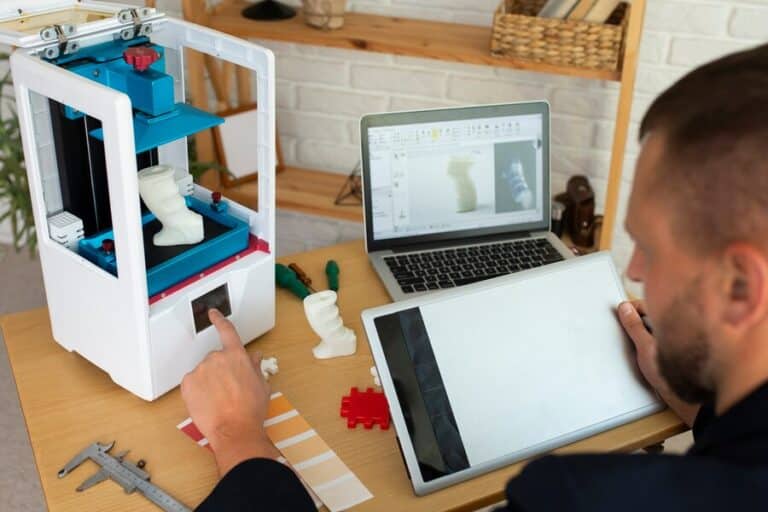The advent of 3D printing technology has ushered in a new era in medicine, offering unprecedented customization and precision in patient care. This innovative approach is transforming various aspects of healthcare, from creating tailored prosthetics to developing personalized drug delivery systems. As the healthcare industry increasingly embraces this technology, the potential for improved patient outcomes and enhanced treatment options continues to expand.
The Transformative Power of 3D Printing

3D printing, also known as additive manufacturing, allows for the creation of complex structures layer by layer from digital models. In medicine, this technology enables the production of customized medical devices, implants, and even pharmaceuticals that are specifically designed to meet the unique needs of individual patients.
Key Applications of 3D Printing in Medicine
- Customized Prosthetics and Implants: Traditional prosthetics often require multiple fittings and adjustments to achieve a proper fit. 3D printing allows for the creation of patient-specific prosthetics that perfectly match an individual’s anatomy. This results in improved comfort, functionality, and overall satisfaction for patients. Similarly, custom implants can be designed to fit precisely within a patient’s body, reducing the risk of complications and enhancing recovery times.
- Personalized Drug Delivery Systems: One of the most exciting advancements in 3D printing is its application in pharmaceuticals. Customized drug delivery systems can be created to control the release rate and dosage of medications tailored to individual patient needs. This level of personalization can lead to more effective treatments with fewer side effects, as medications can be designed to target specific areas of the body or release at precise intervals.
- Surgical Planning Tools: Surgeons are increasingly utilizing 3D-printed models based on a patient’s unique anatomy to enhance preoperative planning. These models allow surgeons to visualize complex structures and practice procedures before entering the operating room, leading to improved surgical outcomes and reduced operation times.
- Bioprinting: The field of bioprinting is rapidly evolving, with researchers exploring the potential to create living tissues and organs using 3D printing technology. Although still in its infancy, bioprinting holds promise for addressing organ shortages and improving transplant success rates by creating patient-matched tissues.
- Custom Orthotics: Similar to prosthetics, orthotics can be tailored using 3D printing technology to fit the exact contours of a patient’s foot or limb. This customization not only enhances comfort but also improves functionality and effectiveness in treating various musculoskeletal conditions.
Challenges and Future Directions
Despite its many advantages, the integration of 3D printing into mainstream medicine faces several challenges. Regulatory hurdles, material limitations, and the need for rigorous testing and validation are critical factors that must be addressed before widespread adoption can occur. Additionally, ensuring that healthcare providers are trained to use this technology effectively is essential for maximizing its benefits.As research continues and technology advances, the future of 3D printing in medicine looks promising. Innovations in materials science are leading to new biocompatible materials that can be used for implants and drug delivery systems, while advancements in software are making it easier to design complex structures tailored to individual patients.
Conclusion
3D printing is revolutionizing medicine by providing custom solutions that enhance patient care and treatment outcomes. From personalized prosthetics and implants to innovative drug delivery systems and surgical tools, this technology is paving the way for a more tailored approach to healthcare. As we continue to explore its potential, 3D printing stands at the forefront of medical innovation, promising a future where treatments are as unique as the patients who receive them.
FAQs
- What is 3D printing in medicine?
3D printing in medicine refers to the use of additive manufacturing technology to create customized medical devices, implants, prosthetics, drug delivery systems, and surgical tools tailored to individual patients’ needs. - How does 3D printing improve prosthetics?
By allowing for patient-specific designs that match an individual’s anatomy precisely, 3D printing enhances comfort, functionality, and overall satisfaction compared to traditional prosthetic manufacturing methods. - What are personalized drug delivery systems?
These are customized systems created through 3D printing that control medication release rates and dosages according to individual patient requirements, leading to more effective treatments with fewer side effects. - Can 3D printing be used for surgical planning?
Yes! Surgeons can use 3D-printed models based on a patient’s anatomy for preoperative planning, which helps improve surgical outcomes by allowing them to visualize complex structures before surgery. - What is bioprinting?
Bioprinting is an advanced form of 3D printing that aims to create living tissues or organs using bio-ink made from living cells. This technology holds potential for addressing organ shortages in transplants. - What challenges does 3D printing face in medicine?
Challenges include regulatory hurdles, material limitations, ensuring rigorous testing for safety and efficacy, and training healthcare providers on how to effectively use this technology.

